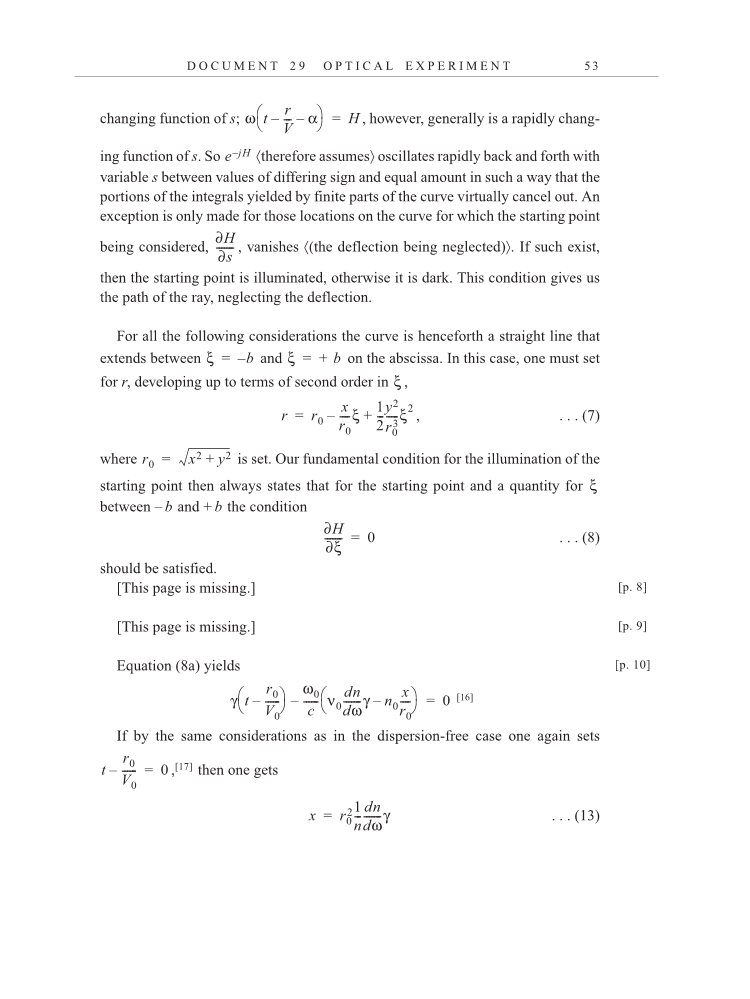D O C U M E N T 2 9 O P T I C A L E X P E R I M E N T 5 3 changing function of s , however, generally is a rapidly chang- ing function of s. So therefore assumes oscillates rapidly back and forth with variable s between values of differing sign and equal amount in such a way that the portions of the integrals yielded by finite parts of the curve virtually cancel out. An exception is only made for those locations on the curve for which the starting point being considered, , vanishes (the deflection being neglected) . If such exist, then the starting point is illuminated, otherwise it is dark. This condition gives us the path of the ray, neglecting the deflection. For all the following considerations the curve is henceforth a straight line that extends between and on the abscissa. In this case, one must set for r, developing up to terms of second order in , , . . . (7) where is set. Our fundamental condition for the illumination of the starting point then always states that for the starting point and a quantity for between – b and + b the condition . . . (8) should be satisfied. [This page is missing.] [This page is missing.] Equation (8a) yields [16] If by the same considerations as in the dispersion-free case one again sets ,[17] then one gets . . . (13) ω t r V --- – α – H = e–jH ∂H ∂s ------- ξ b –= ξ + b = ξ r r0 x r0 ----ξ – 1y2 2r03 ------ξ2 - - + = r0 x2 y2 += ξ ∂H ∂ξ ------- 0 = [p. 8] [p. 9] [p. 10] γ t r0 V0 ----- -– ω0 c ------ ν0dωγ dn ------ - n0---- x r0 – – 0 = t r0 V0 ----- - – 0 = x r0 2-------- 1 ndω - dn -γ =
